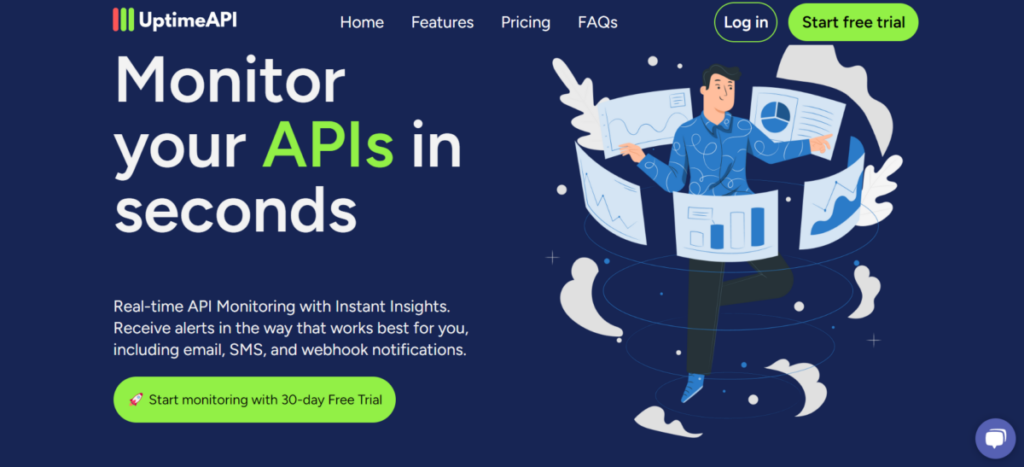APIs serve as the backbone of modern applications, enabling communication between different software systems. However, even a brief API failure can lead to disrupted services, unhappy customers, and lost revenue. This is where API Monitoring Tools come in. These tools provide developers with real-time insights into API performance, helping to detect and resolve issues before they affect the end-user experience. With the right monitoring tools, developers can stay ahead of potential failures and keep their applications running smoothly.
API Monitoring Tools are Critical for Application Success
API Monitoring Tools are platforms that allow developers to monitor their APIs in real time. They track key performance metrics such as uptime, response time, and error rates. These tools can also simulate API requests from different locations, enabling developers to measure latency and pinpoint issues based on geographical regions. They play a crucial role in application success, helping developers ensure that APIs perform optimally under varying conditions. Additionally, API Monitoring Tools send alerts when performance issues arise, allowing for swift action and preventing costly downtime. With these tools, developers can maintain a high level of reliability and ensure a consistent user experience.
Top 3 API Monitoring Tools
Uptime API is a powerful solution designed to offer developers real-time monitoring of their APIs. This tool provides instant insights into key metrics such as uptime, latency, and API performance from multiple global locations. With its intuitive dashboard, developers can track the health of their APIs with ease and receive alerts the moment an issue arises. The Uptime API also allows for customizable monitoring, enabling developers to tailor their alerts based on specific performance thresholds. Its robust reporting features help teams stay informed and address problems before they escalate, making it an excellent choice for businesses prioritizing reliability and performance.
Postman is a widely recognized tool in the API development and testing space, but it also offers powerful API monitoring capabilities. With Postman’s API monitoring, developers can create custom tests to ensure their APIs are working as expected. It allows you to run these tests automatically and at scheduled intervals, providing real-time insights into API functionality. Postman’s monitoring system tracks uptime, response times, and performance from various regions, giving developers a comprehensive view of how their APIs perform globally.
Catchpoint is another top-tier API monitoring tool that excels in providing deep performance insights. It monitors APIs from multiple locations worldwide, giving developers an accurate picture of how their APIs perform under different conditions. Catchpoint is known for its detailed analytics, helping developers understand the root causes of issues such as latency spikes or connection failures. It offers advanced alerting features, ensuring that teams are notified the instant an issue is detected.
Conclusion
In conclusion, API Monitoring Tools are vital for maintaining application health and ensuring optimal API performance. Tools like Uptime API, Postman, and Catchpoint provide developers with the real-time insights needed to catch issues early and address them before they escalate into major problems. By incorporating these tools into their workflow, developers can ensure that their APIs remain reliable, fast, and resilient under all conditions.




